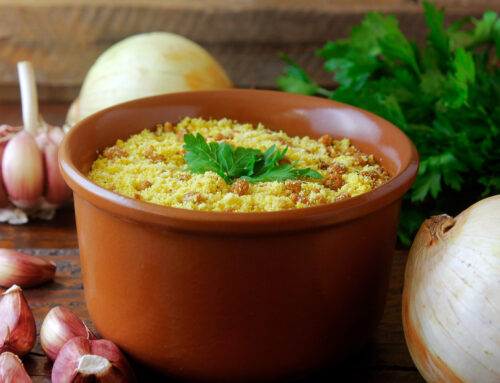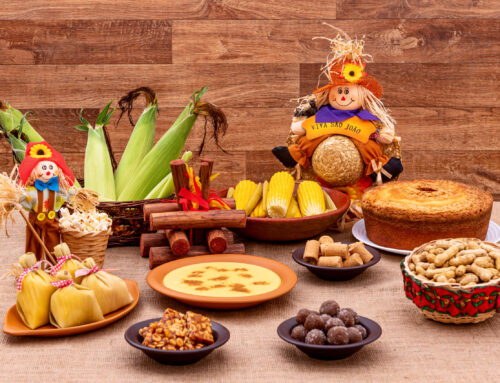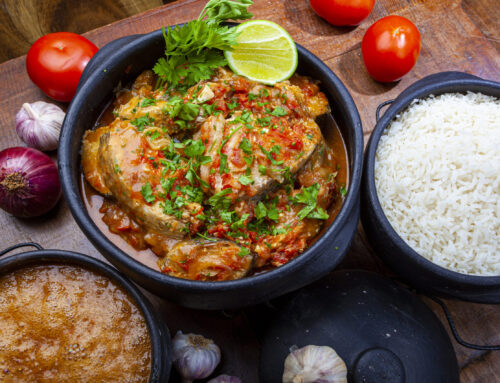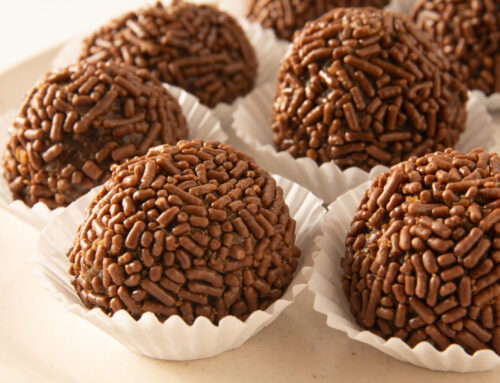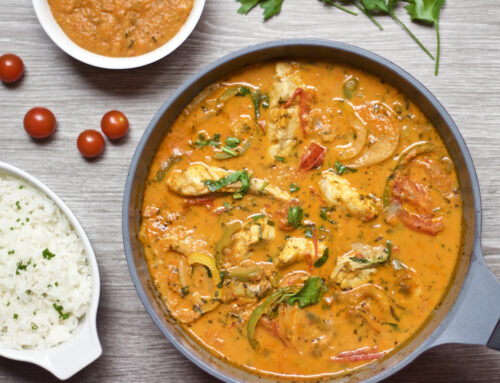Table of Contents
- Coxinha: The Darling of the Southeast
- Acarajé: O Sabor da Bahia
- Pastel com Caldo de Cana (Sugarcane Juice): The Perfect Combination
- Churrasquinho: The Flavor of Brazil from North to South
- Cachorro Quente (Hot Dog): The Brazilian Version of a Global Classic
- Churros: The Sweet That Conquered Brazil
- Boiled Corn with Butter: A Brazilian Classic
- Churrasquinho Grego (Greek-Style Skewers): A Flavor Fusion on the Streets of Brazil
Brazilian street food is a true celebration of flavors, colors, and cultures. From north to south of the country, Brazilians have transformed the art of eating on the street into an unforgettable experience that captivates both locals and tourists. In this article, we will explore some of the best street foods of Brazil, diving into the regions where these dishes originated and uncovering a bit of their stories.
Coxinha: The Darling of the Southeast
The coxinha is one of the jewels of Brazilian street cuisine, a savory treat that has won over palates throughout the country, but holds a special connection with the Southeast region, particularly with São Paulo, where it is considered a local passion. This snack has a curious history and a presence that goes beyond snack bars, pubs, and parties, even marking its presence at sophisticated events.
The dough, made from wheat flour and chicken broth, wraps around a creamy filling of shredded chicken, often mixed with cream cheese (the famous “catupiry”) or other cheeses, providing a rich and comforting taste experience. The coxinha is then shaped like a chicken thigh, breaded, and fried until it reaches a golden color and a crispy texture on the outside, while keeping its interior soft and moist.
Its origin is shrouded in legends, one of the most popular being that it was invented in the 19th century on a farm in the interior of São Paulo to please a prince who liked to eat chicken thighs but wished to do so in a more practical way.
The coxinha is not only appreciated for its flavor; it also plays an important social role. It is an indispensable element at birthday parties, family gatherings, and meet-ups with friends. In São Paulo and other cities in the Southeast, finding the “best coxinha” is a subject of heated debate and local passion, with each establishment offering its unique version, whether it be the type of dough, the quality of the filling, or the frying method.
Furthermore, the coxinha has become a symbol of comfort and nostalgia for many Brazilians. Its flavor brings back happy and relaxed moments, making this savory treat much more than a quick meal: it is a cultural and emotional experience.
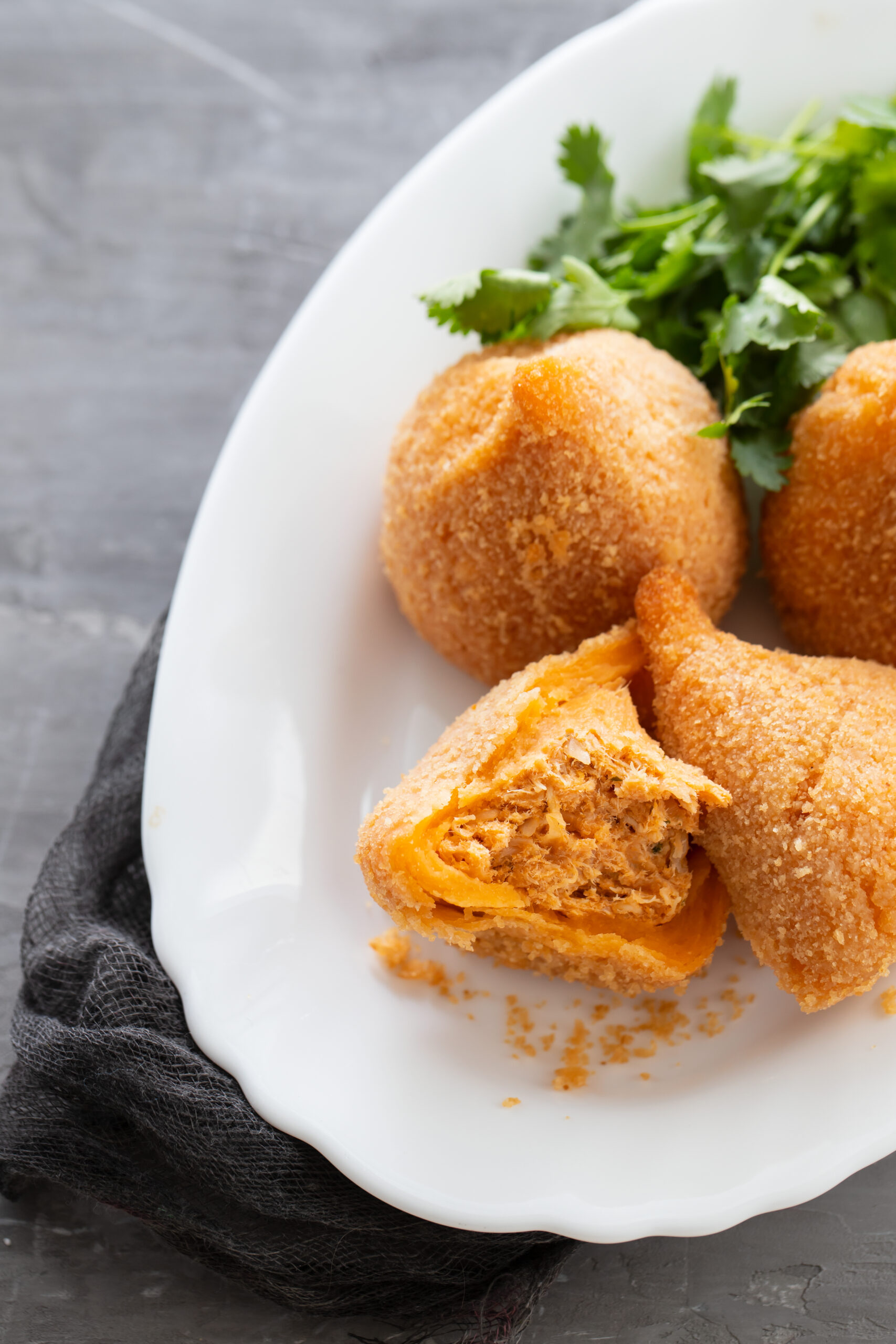
Acarajé: O Sabor da Bahia
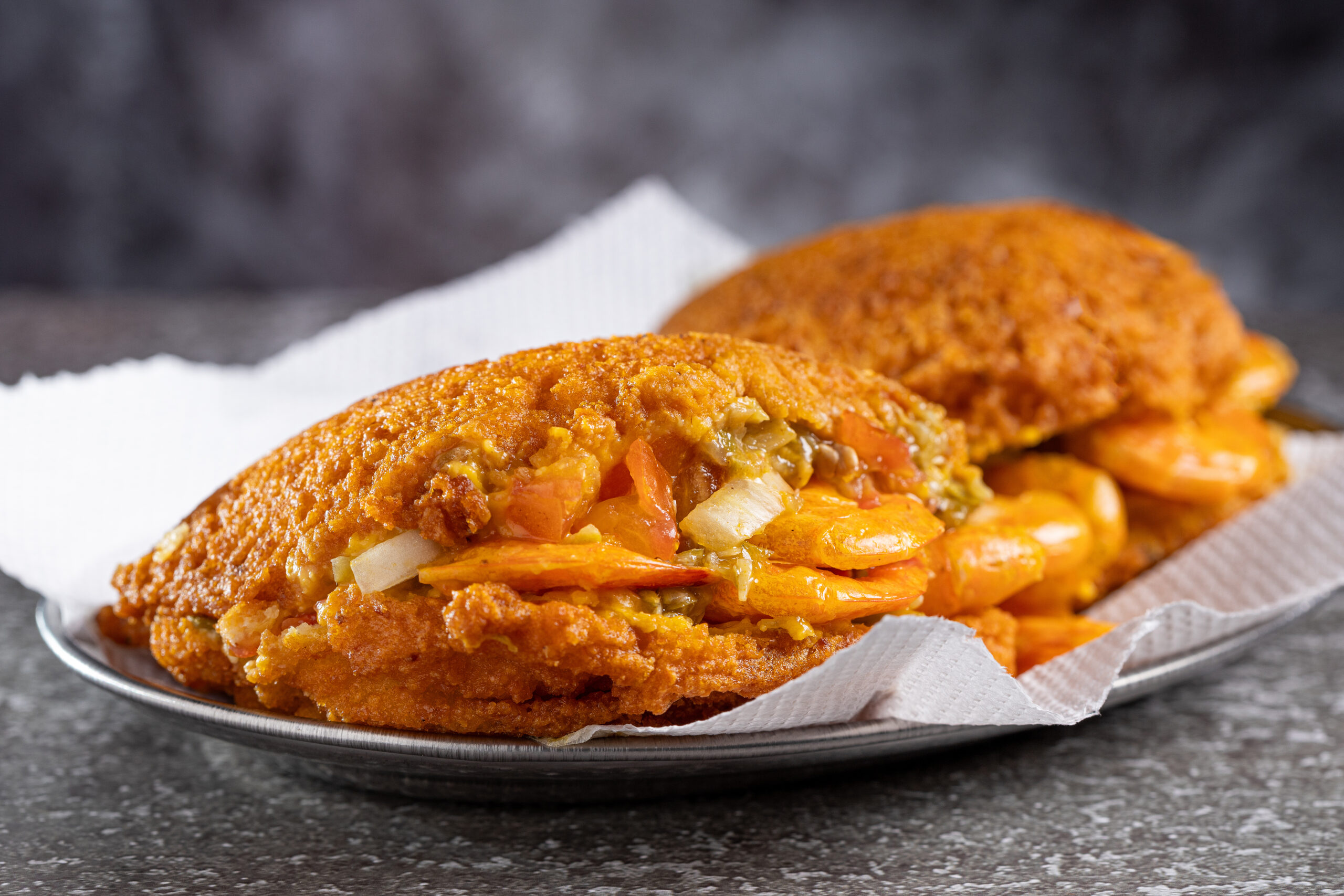
Acarajé is more than just a simple food in Bahia; it is a fundamental element of the state’s cultural and historical identity, an icon of the rich Afro-Brazilian heritage that permeates the region. This black-eyed pea fritter, fried in palm oil and filled with vatapá, shrimp, salad (tomato, onion, and cilantro), and caruru, represents a fusion of flavors as vibrant and diverse as Bahia itself.
The origin of acarajé is intrinsically linked to the orixás, deities of Candomblé, an Afro-Brazilian religion. It is traditionally offered to Iansã, the orixá of winds, storms, and lightning, symbolizing a deep connection between cuisine and the religious and cultural practices of Afro-Brazilians. The women who sell acarajé, known as baianas de acarajé, wear typical white garments and turbans, reinforcing the spiritual and cultural connection with Africa.
The preparation of acarajé is an art that requires technique and patience. The black-eyed peas are carefully selected, peeled, ground, and seasoned before being shaped into fritters and fried in hot palm oil, which gives them a unique golden color and distinct flavor. The choice of palm oil is not just for taste but also for its cultural and nutritional importance, being a central element in Afro-Brazilian cuisine.
Acarajé is consumed at any time of the day, but it is especially sought after as an afternoon snack or early in the evening, served hot, straight from the skillet, at street stalls and traditional food markets in Salvador and throughout Bahia. These stalls, often located at historical sites, not only serve food but also function as social and cultural meeting spaces, where people of different backgrounds come together to enjoy this delicacy and celebrate the rich cultural tapestry of the region.
Beyond its cultural and religious significance, acarajé also plays an important role in the local economy, being a source of income for many families. The baianas de acarajé are recognized as cultural heritage of Brazil, an honor that highlights the importance of this dish not just for Bahia, but for the entire country.
Therefore, acarajé is much more than an item on the Brazilian street food menu; it is a symbol of resistance, pride, and celebration of Afro-Brazilian heritage, a true expression of the flavor of Bahia.
Pastel com Caldo de Cana (Sugarcane Juice): The Perfect Combination
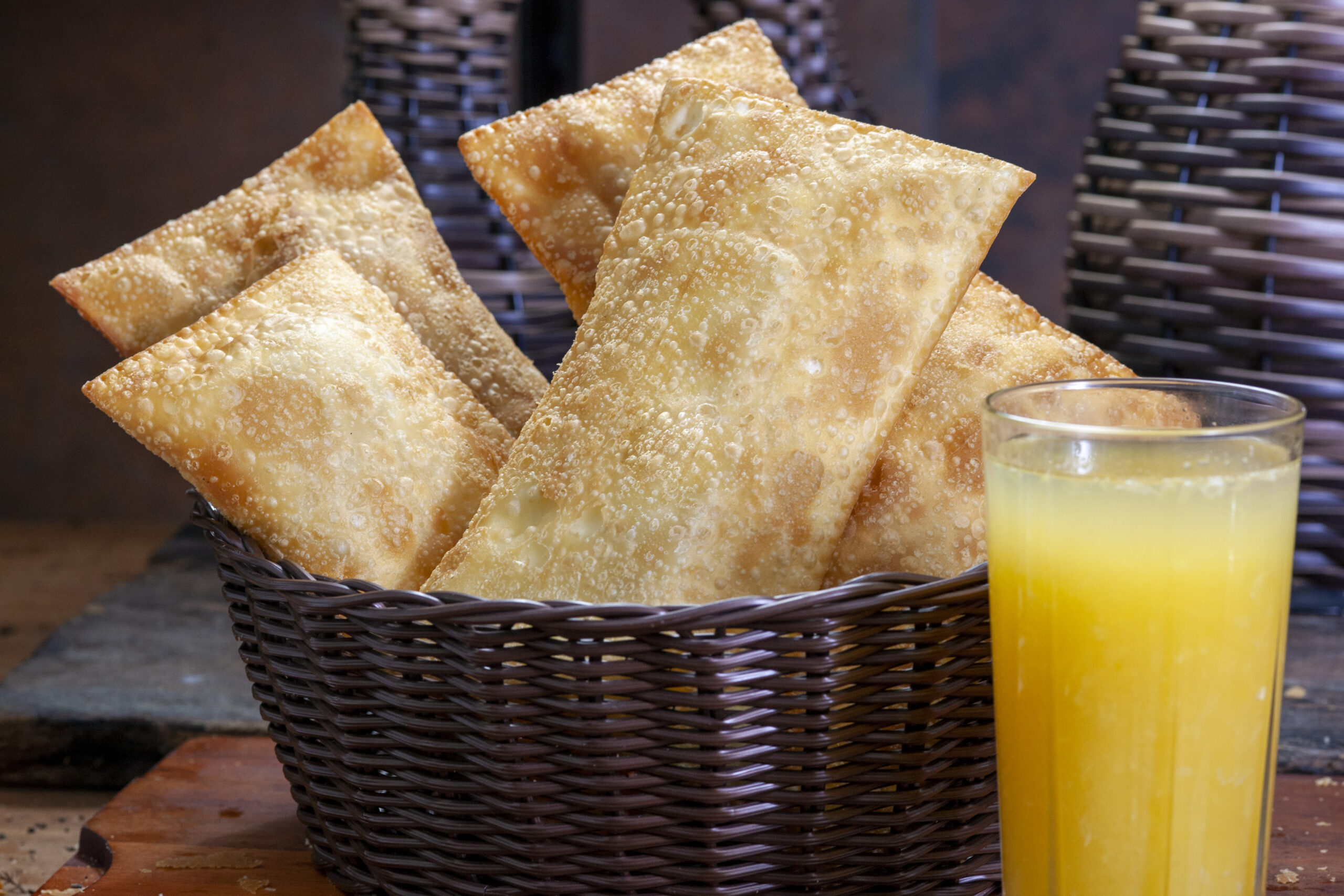
The pastel paired with a glass of cold sugarcane juice is one of the most iconic duos of Brazilian street food. This combination is especially beloved at open-air markets and municipal markets throughout the country but stands out in states like São Paulo and Rio de Janeiro, where weekly markets are a deeply rooted tradition in the local culture.
The pastel, with its thin and crispy dough, fried on the spot, serves as a blank canvas for the most varied fillings. Ground beef, cheese, palm heart, chicken with catupiry, and shrimp are just a few of the favorite options, though the creativity of Brazilian pastel makers knows no bounds, resulting in creations like pizza pastels, cod pastels, and even sweet versions filled with chocolate or guava paste.
The magic of the pastel lies in its texture and the explosion of flavors when bitten into, a sensory experience that is immediately complemented by the sugarcane juice. Freshly extracted, this naturally sweet juice is the perfect drink to balance the saltiness of the pastel. Known also as “garapa,” sugarcane juice is rich in nutrients, providing a quick and refreshing source of energy, ideal for Brazil’s typically hot days.
The production of sugarcane juice is a spectacle in itself. The canes are inserted into a mill, and the greenish liquid that emerges is collected in jars, ready to be served, plain or with a touch of lemon to add a sour note to the sweet. Watching this process while waiting for the pastel to be fried is part of the ritual of appreciating this perfect combination.
More than just a simple snack, the pastel and sugarcane juice symbolize a relaxed and joyful way of life, typical of Brazilians. The markets where these items are sold transform into community meeting points, where friends and families gather not just to eat but to socialize, share news, and enjoy the vibrant atmosphere.
Churrasquinho: The Flavor of Brazil from North to South
The churrasquinho is a true emblem of Brazilian street cuisine, present in every corner of the country, from small villages to large metropolises. This accessible version of Brazilian barbecue consists of small skewers of meat, chicken, sausage, or even coalho cheese and vegetables, grilled over charcoal until perfection is achieved. The aroma that wafts from the improvised grills on the sidewalks is capable of attracting a crowd, becoming a meeting point for friends, family, and even strangers.
The universality of the churrasquinho reflects the diversity of Brazil. Each region adds its own touch to the dish, whether through specific seasonings, types of meat, or preparation methods. In the South, for example, the tradition of gaucho barbecue influences the preference for beef cuts, while in the North and Northeast, sun-dried meat and chicken stand out. Regardless of the variations, simplicity and intense flavor are the hallmarks of this dish, which is often accompanied by farofa, vinaigrette, and pieces of cooked or fried cassava.
Besides being a tasty and comforting meal, the churrasquinho plays a significant role in the social life of Brazilians. Street grills become democratic spaces where people of all ages and social classes gather. It is common to see workers taking a break for a quick lunch, families enjoying a snack at the end of the day, or young people starting their night with a skewer in hand.
This tradition also reflects the ability of Brazilians to transform the simple act of grilling meat into a culinary art. The sellers of churrasquinho, with their techniques and secrets passed down from generation to generation, are true grill masters, ensuring that each skewer is a small masterpiece of flavor.
In summary, the churrasquinho is not just an item on the vast menu of Brazilian street food; it is a symbol of the country’s culture, representing the national passion for barbecue in a version that is accessible, delicious, and deeply rooted in the social fabric of Brazil.
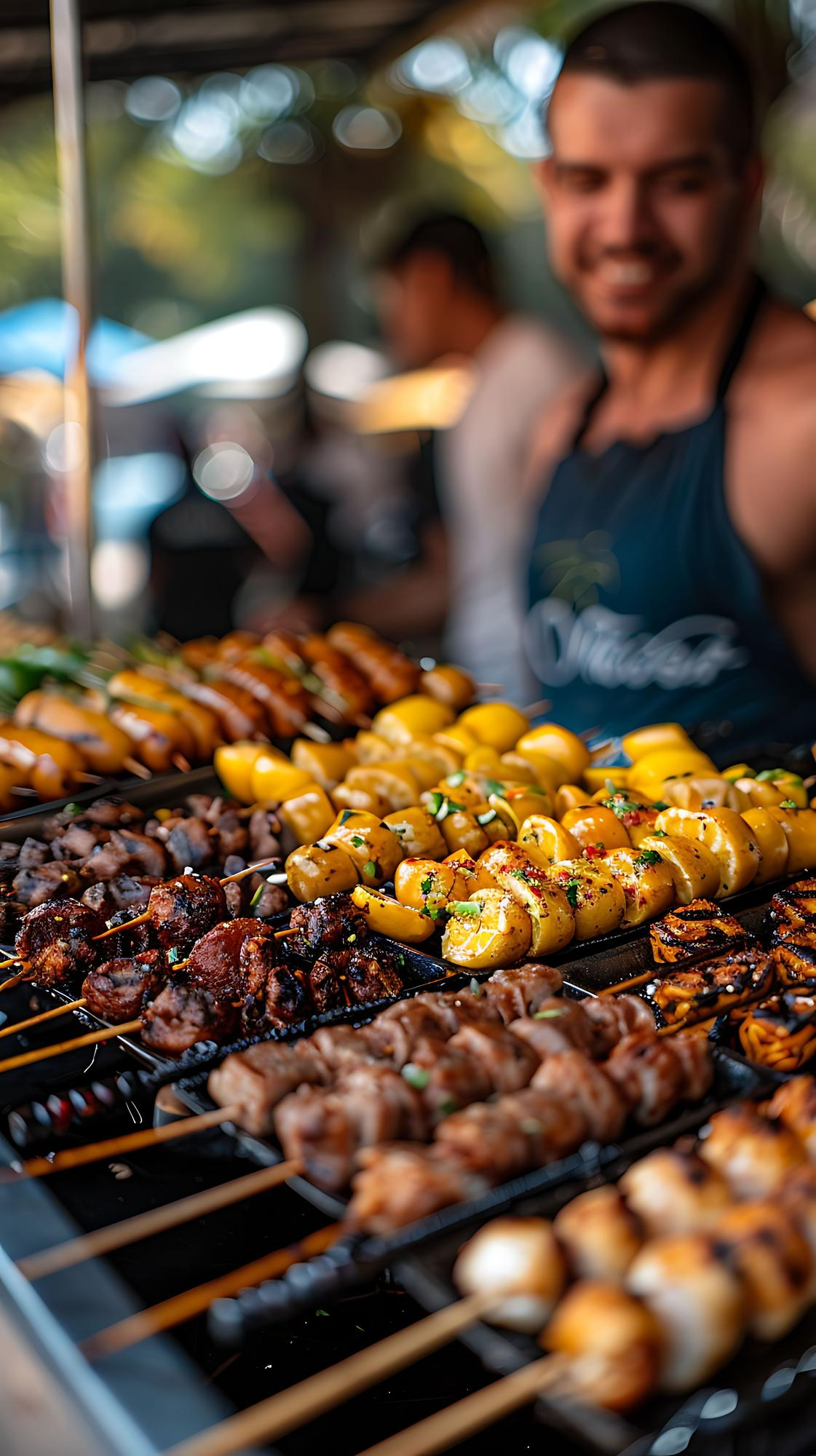
Cachorro Quente (Hot Dog): The Brazilian Version of a Global Classic

The hot dog is a popular dish in many countries, but Brazil has given its own twist to this street food classic. Although it can be found in almost all regions of the country, it is in the cities of the South and Southeast, such as Porto Alegre and São Paulo, that the hot dog takes on unique characteristics. The Brazilian version goes far beyond the simple sausage in bread. Here, it is generously topped with a variety of accompaniments including mashed potatoes, corn, peas, grated cheese, shoestring potatoes, homemade tomato sauce, and sometimes even vinaigrette, reflecting the creativity and richness of local flavors.
The history of the hot dog in Brazil is a reflection of its adaptability and the influence of the multiple cultures that form the social fabric of the country. Originally a German invention, the hot dog was incorporated into Brazilian culture in a way that made it practically a new dish, a symbol of Brazilian street gastronomy capable of bringing together people of all ages and social classes.
Like the rest of Brazilian street food, the hot dog is more than a quick and convenient meal; it is an integral part of Brazil’s urban experiences. Whether after a football match, at a birthday party, or simply as a nighttime snack, the Brazilian hot dog is a true celebration of the country’s diversity and culinary creativity.
Churros: The Sweet That Conquered Brazil

Churros, with their origins on the Iberian Peninsula, have found a new home in Brazil, where they were warmly received and reinvented. Although common in many Latin American countries, in Brazil, they gain a special touch with generous fillings of dulce de leche, chocolate, or guava paste, plus a coating of sugar and cinnamon that makes them irresistible. Traditionally sold in street carts or at fairs, Brazilian churros are larger and more stuffed than their Spanish counterparts, making them a dessert or snack that satisfies on its own.
Each region of Brazil has its own way of serving churros, but one thing remains constant: the joy they bring to those who taste them. Churros in Brazil are not just a sweet treat but an invitation to indulgence and the celebration of life’s small pleasures. Whether as a snack after school, a dessert after dinner, or simply as a way to sweeten any day, churros hold a special place in Brazilian street gastronomy.
Boiled Corn with Butter: A Brazilian Classic
Boiled corn with butter is one of the simple and universal pleasures of Brazilian street food. Found in almost all regions of the country, this healthy and comforting snack is especially popular during the colder months and at the June festivals, celebrated with great enthusiasm in Brazil. The corn is boiled until perfectly tender and then served hot, with melted butter on top, enhancing its natural sweet flavor.
The tradition of boiled corn in Brazil dates back to pre-colonial times, being one of the staple foods in the diets of indigenous peoples. With the arrival of the Portuguese and the introduction of butter, boiled corn gained a new dimension. Today, it is a snack loved by people of all ages, served in street carts, on beaches, in parks, and at outdoor events. The simplicity of corn with butter is the key to its success: a nutritious, accessible, and extremely tasty food.
Besides the classic version with butter, it is common to find variations that include salt, grated cheese, and even a pinch of pepper for those who prefer a spicier option. Boiled corn symbolizes Brazil’s ability to create delicious and satisfying dishes from simple and accessible ingredients, celebrating the country’s agricultural richness.
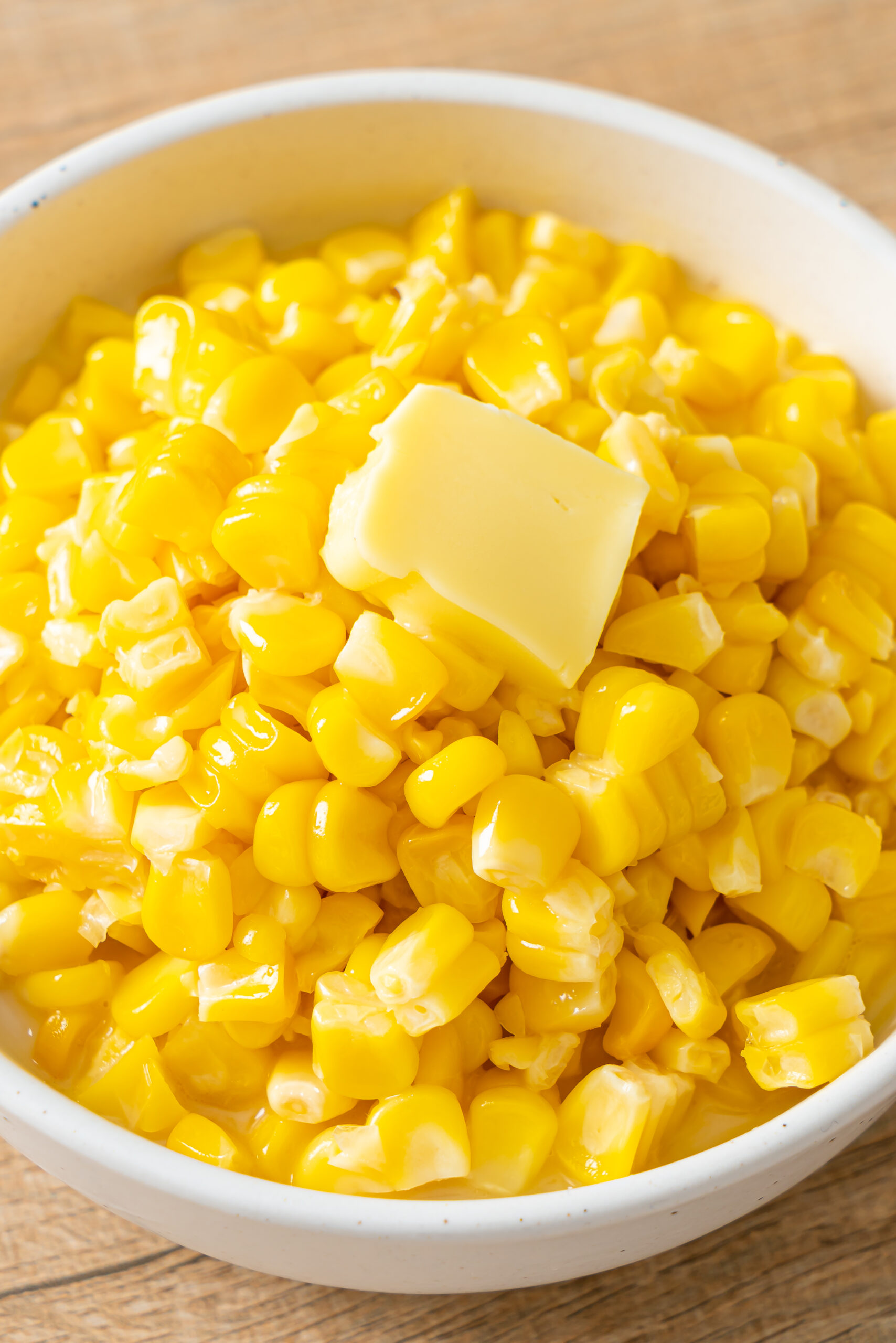
Churrasquinho Grego (Greek-Style Skewers): A Flavor Fusion on the Streets of Brazil
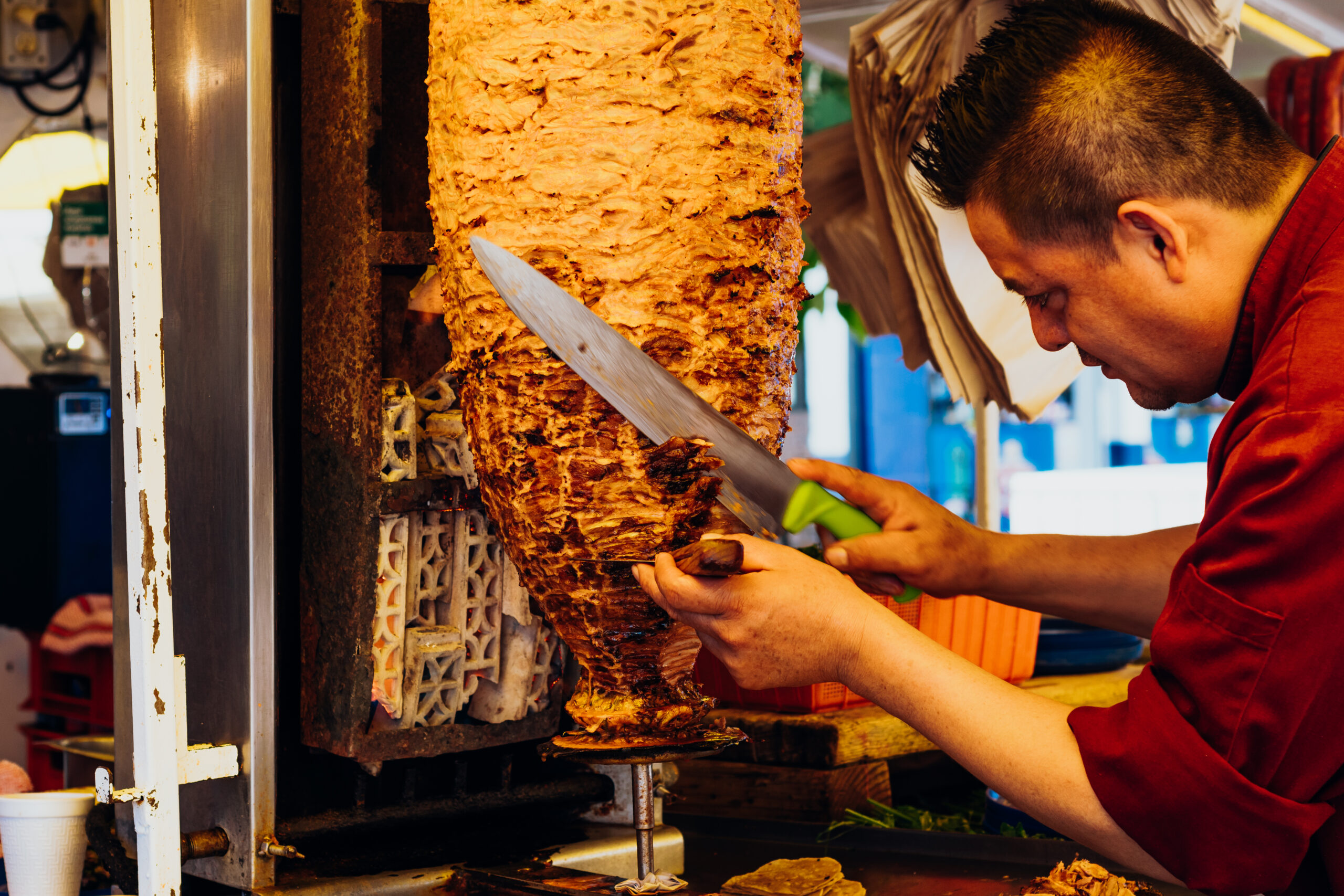
The Greek-Style Skewer is an interesting Brazilian adaptation of the traditional Greek barbecue, known worldwide as Gyro. Although the name suggests a Hellenic origin, this version has been completely reinvented on the streets of Brazil, becoming a quick and accessible meal option, especially popular in urban centers like São Paulo and Rio de Janeiro.
Unlike its Mediterranean cousin, which is served in pita bread with tzatziki (a yogurt-based sauce), the Brazilian Greek-Style Skewer consists of thin slices of meat (beef, chicken, or pork) roasted on a vertical rotating skewer. These slices are then placed in a French bread, accompanied by tomato, lettuce, onion, and sometimes french fries, with the addition of garlic sauce or mayonnaise to moisten the mixture.
What makes the Greek-Style Skewer a street food phenomenon in Brazil is not just its convenience or delicious taste, but also its ability to incorporate the country’s culinary diversity. Brazilian innovation has transformed a foreign dish into something so familiar that many Brazilians consider it a homegrown creation.
Street food in Brazil is a reflection of the country’s cultural and historical diversity. Each dish carries stories of migration, adaptation, and creativity, serving as an invitation to explore Brazil’s cultural riches. More than just nourishing, Brazilian street food invites experiences that sharpen all the senses, offering unforgettable flavors and fascinating stories.

